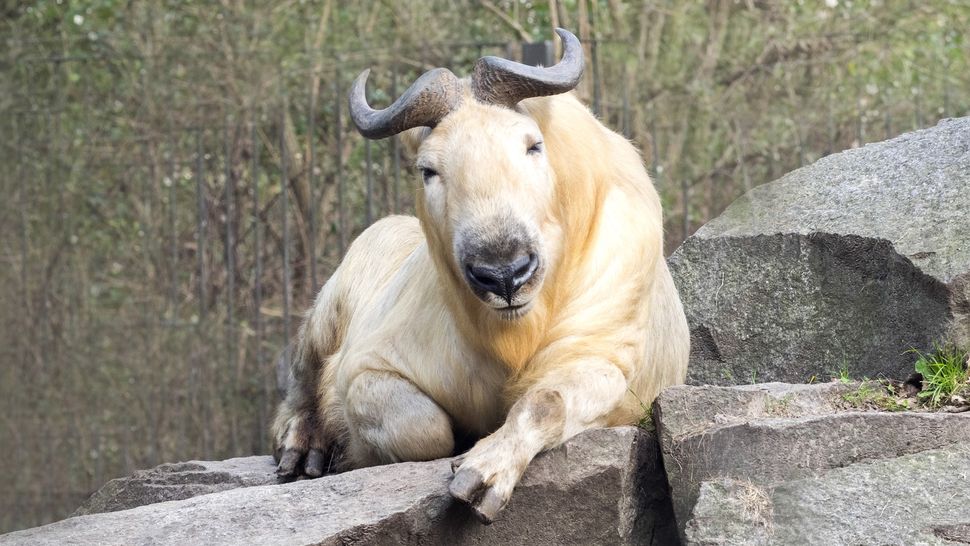In Asia’s alpine zones and forested valleys, these odd-looking mammals, with their split hooves, gracefully conquer steep, rocky terrain. Nature’s mountaineers, they navigate their unique world with style.
Name: Takin (Budorcas taxicolor); Subspecies: Bhutan takin (B. taxicolor whitei), golden takin (B. taxicolor bedfordi), Mishmi takin (B. taxicolor taxicolor), and Sichuan takin (B. taxicolor tibetana)
Habitat: Roaming the rugged Alpine realms and lush forested valleys across Asia, their territories stretching from Bhutan, Myanmar, and northern India to central and southern China, and Tibet.
Diet: Takins indulge in a seasonal feast of vegetation, relishing leaves from trees and shrubs, grazing on grasses and forbs. Winter sees them nibbling on tender twigs when their preferred delicacies are in short supply.
Why They’re Legendary: Picture this: moose-like noses, stocky bodies, and horns that wouldn’t look out of place on a wildebeest. Shaggy fur, spanning hues from gray-brown to chocolate, adds the finishing touch. Enter the golden takin, adorned in a radiant golden fleece, possibly inspiring the mythical golden fleece of Greek legend.
These quirky beings traverse their mountainous domains with specially adapted split hooves, embracing the challenge of steep, rocky terrain. Come summer, they gather in herds of up to 300, only to form intimate groups of 15 to 30 during the winter chill. Males assert dominance with a unique cologne—urine spraying.
Facing minimal predators, with snow leopards eyeing the calves and occasional attention from leopards, tigers, wolves, and Asiatic black bears, takins deploy a distinct coughing signal when danger lurks. Conservation concerns loom as all subspecies earn a vulnerable status from the International Union for Conservation of Nature (IUCN). Recent insights hint at a potentially smaller range, deepening the mystery and urgency around the fate of these mountain monarchs.
